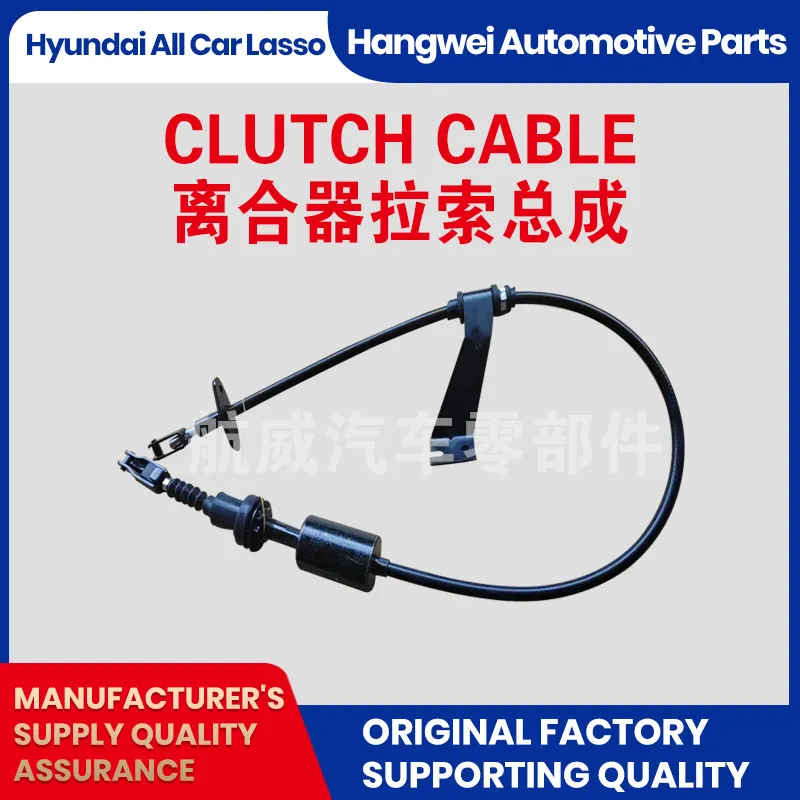Premium Clutch Line: Durable, Leak‑Free, Easy Fit
Clutch Push-Pull Cable: field notes from the shop floor
If you’re sourcing a clutch line for a manual-transmission program, here’s the quick version: durability and routing flexibility still beat hydraulics in cost-sensitive and severe-duty applications. The product we’ve been watching comes out of Qinghe County (Minjiang Street south, Wuzhishan Road east) and, to be honest, it’s been surprising in salt-fog endurance and pedal feel consistency.

What’s trending
Market trend? Automakers and Tier-1s are moving to PTFE-lined conduit, low-friction lubricants, and stainless inner wires to stretch service life. There’s also a quiet shift to modular end fittings for faster assembly. Hydraulics still have fans, but many customers say a well-built clutch line is easier to service, cheaper to validate, and less fussy in cold climates.
Materials and process flow
Inner wire: galvanized or 304 stainless steel strand; conduit: steel spiral with a PTFE liner and PE/PVC jacket; fittings: zinc‑nickel plated or stainless. Methods include precise stranding, swaging/crimping, pre-lube with PTFE-infused grease, and 100% pull-test on final assemblies. Testing usually follows SAE J936 friction checks, ISO 9227 salt spray, and cycle rigs at -40°C to 120°C. Real-world use may vary, of course.
Product specifications (typical)
| Model | Clutch Push-Pull Cable |
| Inner Wire | 7×7 or 7×19 stainless/galvanized, Ø ≈2.0–3.5 mm |
| Liner & Jacket | PTFE liner + PE/PVC outer; low-friction compound |
| Rated Load | ≈ 800–1500 N continuous (application-dependent) |
| Stroke Length | Up to ≈ 180 mm; custom on request |
| Min. Bend Radius | ≈ 10× cable OD (recommendation) |
| Service Life | ≥ 300,000 cycles at 80 N, 25°C; > 200,000 cycles at -30°C |
| Temperature Range | -40°C to +120°C (short peaks to 140°C) |
| Compliance | IATF 16949, ISO 9001, RoHS, REACH |
Note: values are typical; tolerances and performance depend on geometry and routing.
Applications and scenarios
Passenger cars (manual gearboxes), light trucks, buses, off-highway equipment, and motorcycles. Fleet managers like a robust clutch line for long-haul tractors where hydraulic leaks are a headache. Motorsports teams, oddly enough, appreciate the linear pedal feel and quick replacement during pit windows.
Test data snapshots
- Friction stability: ≤ ±10% variation after 100k cycles (SAE J936 rig).
- Salt spray: 240–480 h to red rust on plated fittings (ISO 9227; ASTM B117 comparable).
- Tensile: assembly proof load ≈ 2.5–3.0 kN; 100% pull-tested in-line.
Vendor comparison (quick look)
| Vendor | Certs | Lead Time | Customization | Notes |
|---|---|---|---|---|
| HWEI (Qinghe) | IATF 16949, ISO 9001 | ≈ 3–5 weeks | Ends, stroke, jacket, plating | Good salt-fog; consistent pedal feel |
| Generic Importer | Varies | ≈ 6–8 weeks | Limited | Price-first; variable QC |
| Local Assembler | ISO 9001 (often) | ≈ 1–3 weeks | High | Fast protos; cost varies |
Customization tips
Specify routing first. Then lock stroke, end-fittings (clevis, eyelet, threaded M6/M8), and target actuation force. Ask for low-temperature grease if you run Nordic winters. A low-noise clutch line often uses PTFE liner + spiral conduit with a slightly stiffer jacket.
Quick case notes
A regional bus fleet swapped legacy assemblies for the new clutch line spec: field failures dropped from 1.8% to 0.4% over 12 months. Another small rally team reported a calmer pedal after 200 km stages—anecdotal, sure, but it matches our rig data on friction drift.
Citations:
- SAE J936 – Control Cable Assembly Friction Test Procedure.
- ISO 9227:2017 – Corrosion tests in artificial atmospheres (salt spray).
- IATF 16949:2016 – Automotive Quality Management System.
- RoHS Directive 2011/65/EU and amendments.
- REACH Regulation (EC) No 1907/2006.
-
Clutch Line: Braided, Leak-Proof, OEM-Grade PerformanceNewsNov.10,2025
-
Throttle Cable: Durable, Smooth Control & Universal FitNewsNov.10,2025
-
Throttle Cable: Durable, Smooth, Universal Fit, Easy InstallNewsNov.10,2025
-
Clutch Line: Durable, Leak-Proof, OEM-Grade PerformanceNewsNov.10,2025
-
Hand Brake Cable | Custom, Universal & Trailer SolutionsNewsNov.10,2025
-
Clutch Line: High-Pressure, OEM-Fit, Corrosion-ResistantNewsNov.03,2025
